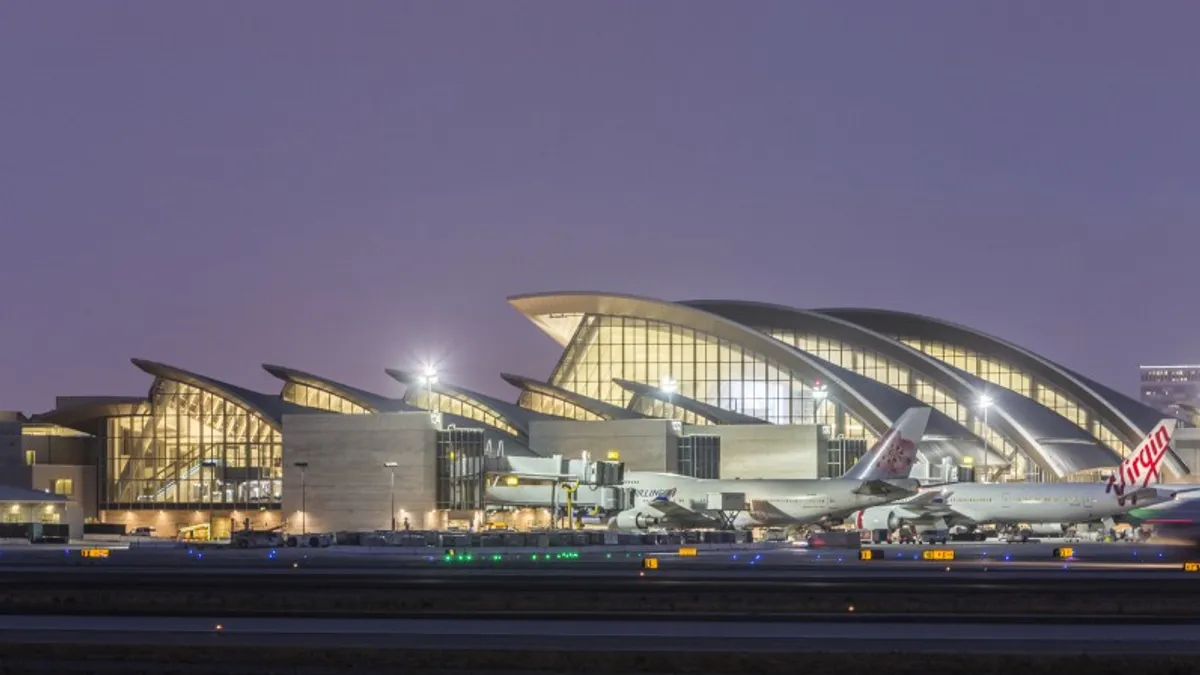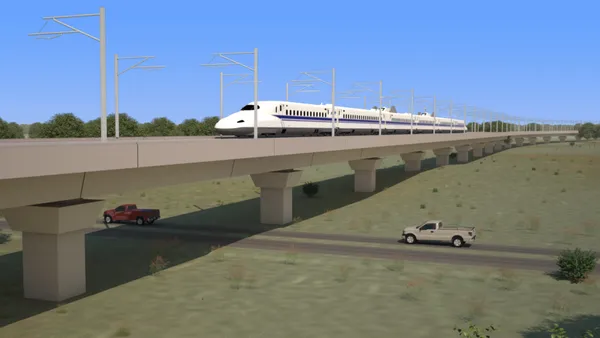Dive Brief:
- In order to reduce congestion, Los Angeles International Airport (LAX) announced plans to stop curbside pickup for taxi and ride-hailing services. All passengers will instead be routed via a shuttle to a centralized area known as "LAX-it", where all pickups will occur.
- The new "LAX-it" area — which will also include amenities like restrooms, benches, umbrellas, local food trucks and Wi-Fi — will open in October. The airport projects that moving ride-hailing pickups to "LAX-it" could reduce traffic around the central terminal by as much as 15% (personal pickups will still be permitted at the terminal).
- Shuttles will run every three to five minutes during peak hours and trips are expected to take less than 15 minutes. Taxi and ride-hailing services will still be allowed to drop off passengers at the terminals.
Dive Insight:
As airlines have added additional routes to LAX, traffic at the airport has increased in recent years; the Los Angeles Times reports that passenger volume has increased from 63.7 million in 2012 to 87.5 million in 2018. Construction on an automated people mover project has also reduced road capacity, and the airport projects that 30% of inner-lane curb space currently used for passenger pickup and drop off could be lost at the height of construction.
"Anyone who has come to LAX knows that traffic in the Central Terminal Area can get rough, and we have heard from our guests that the current system with ride pickups can be frustrating," Keith Wilschetz, deputy executive director for operations and emergency management at Los Angeles World Airports, said in a statement.
In a letter to LAX, Uber raised several points of concern, but said it would continue operating. The company said it believed the lot needed to be "roughly twice its current size," and said the company would need more dedicated pickup stalls (Uber will have 37 stalls, and it gets nearly 500 pickups per hour on average at LAX). The company also said it worried that passenger wait times could be longer and that the road to the LAX-it area could get congested.
"We hope LAX will listen to and incorporate our input so that LAX passengers can continue to access rideshare service in a seamless way," the company said in a statement.
Both Uber and Lyft have looked to new strategies to ease congestion around airports, where the flurry of pickups can generate traffic. The two companies have instituted a system at Portland (OR) International Airport similar to taxi pickups, where passengers line up and then give drivers a numeric code with their trip information, and Lyft brought the same feature to San Diego International Airport in May.
Other airports have taken a similar approach to LAX by moving ride-hailing traffic to another area; San Francisco International Airport, for example, moved pickups to a parking garage, sparking an outcry from Uber.










